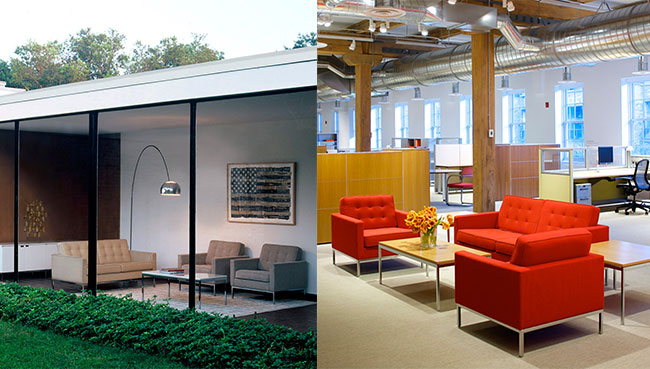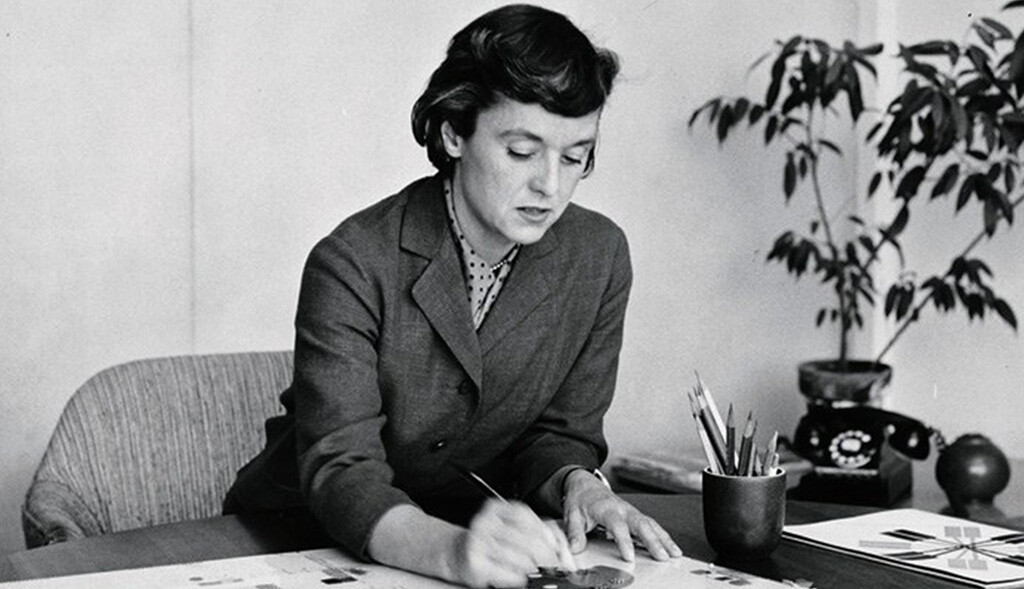Designer of The Month : Florence Knoll
A pioneering way of working
When at the age of 12, Florence Margaret Schust was orphaned, her appointed guardian took her to a number of boarding schools. The one she chose to attend was Kingswood School for Girls, on the outskirts of Detroit, Michigan. Alongside the Cranbrook School for Boys and the Cranbrook Academy of Art, Kingswood was designed by renowned Finnish architect, Elil Saarinen.[caption id="attachment_12159" align="aligncenter" width="1024"]
 Kingswood Academy for Girls in 2013[/caption]
Kingswood Academy for Girls in 2013[/caption]
"I chose Kingswood over some Eastern boarding schools because I was amazed at how beautiful the buildings and interiors were. And the surroundings were magnificent. The Eastern schools weren't like that." - Florence Knoll
Studying at Kingswood, Florence had a growing interest in architecture and through this, befriended Cranbrook's headmaster, Elil Saarinen. Embraced by the Saarinen family, Florence formed a close friendship with Elil's son, Eero. She would go on to study at Cranbrook Academy of Art, thriving within its artistic community. At Cranbrook, students were encouraged to express themselves through different artistic mediums, acting as "Artists in Residence" whilst learning from some of the greatest artists of the contemporary age."Cranbrook is not an art school in the ordinary sense, but a working place for creative art. The leading idea is to have artists of the highest ability live at Cranbrook and execute their work there. This rich and creative atmosphere will bring to Cranbrook young artists and art students who are eager to develop their talents." - Elil Saarinen
[caption id="attachment_12160" align="aligncenter" width="1024"]
 Hans and Florence Knoll together in the 1940s[/caption]
Hans and Florence Knoll together in the 1940s[/caption]
After graduating Cranbrook, Florence went on to study under some of the most influential architects of the 20th century. In Cambridge, Massachusetts, she worked with Walter Gropius and Marcel Breuer. At the Illinois Institute of Technology, she studied under Ludwig Mies van der Rohe. When she moved to New York in 1941, she met Hans Knoll, a businessman who was establishing a furniture company. They married in 1946, and Florence's design skills, combined with her husband's business acumen, grew their company into a worldwide name.


"I designed the architectural elements that were needed to make the room work, things like the walls, tables and sofas." - Florence Knoll
Florence soon took charge of the Knoll Planning Unit, a division of the business that came to define the standard for modern corporate interiors. Pioneering the idea of 'total design', she married architecture and furniture to create fully considered spaces, fit for use. This approach guaranteed the success of Knoll, and the company soon took big clients such as IBM and CBS. When in 1955, Hans Knoll died suddenly, Florence took the helm and became president of Knoll. Five years later and recently remarried, she resigned the presidency to focus on directing the design and development of the company - her true passion.
"She had that ability, to critique something, to tear it apart and put it back together." - Bob Longwell
Through researching and surveying each client, assessing their needs and understanding the company's way of working, Florence produced designs that were comprehensive and practical as well as thoroughly modern. Her designs are still popular today, for commercial use in offices, but also in modern and minimal homes. Her attention to detail and understanding of modern needs helped her to change the way that design was considered within the workplace, creating a new modern aesthetic for the 20th century.
See our Florence Knoll collection here. See the Knoll Studio collection here.
Time for more? The Rediscovery of Greta Grossman | Designer of the Month : Achille Castiglioni |Designer of the Month : George Nelson
-
All StoriesUtility Presents: Lamp Building Workshop with AnglepoiseRead More
In celebration of our 25th anniversary in the design industry, we continued our year-long events calendar with an immersive Lamp building workshop hosted by British design royalty Anglepoise. Reflecting a shared commitment to timeless design and enduring craftsmanship, we were...

